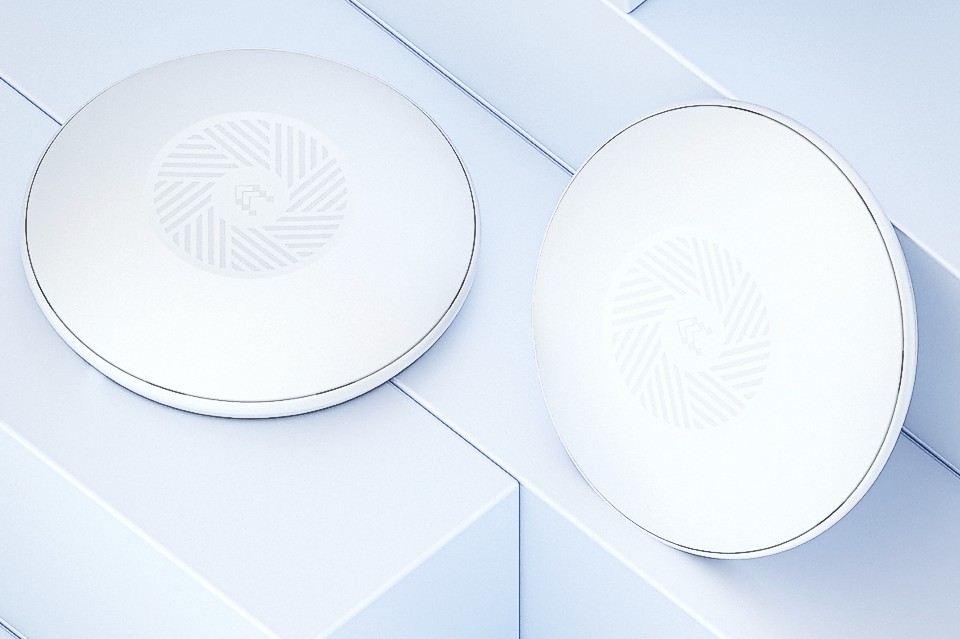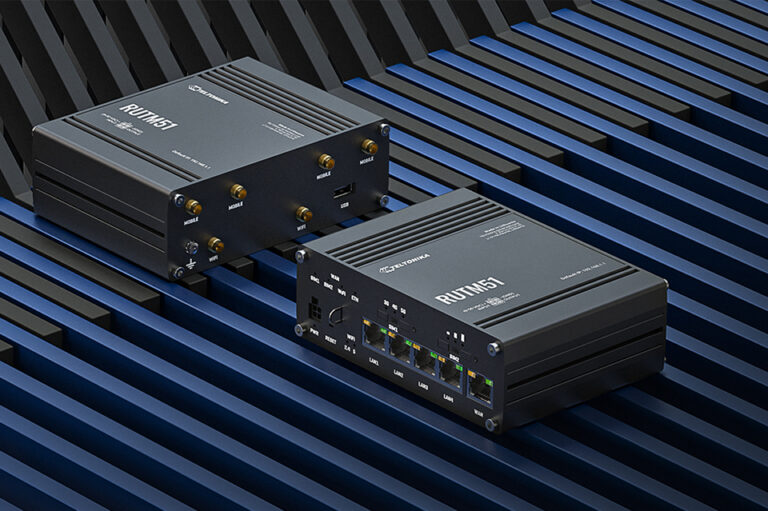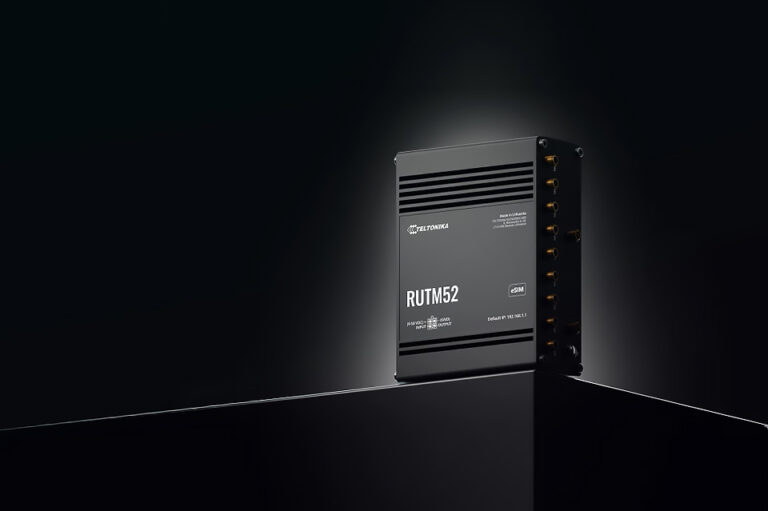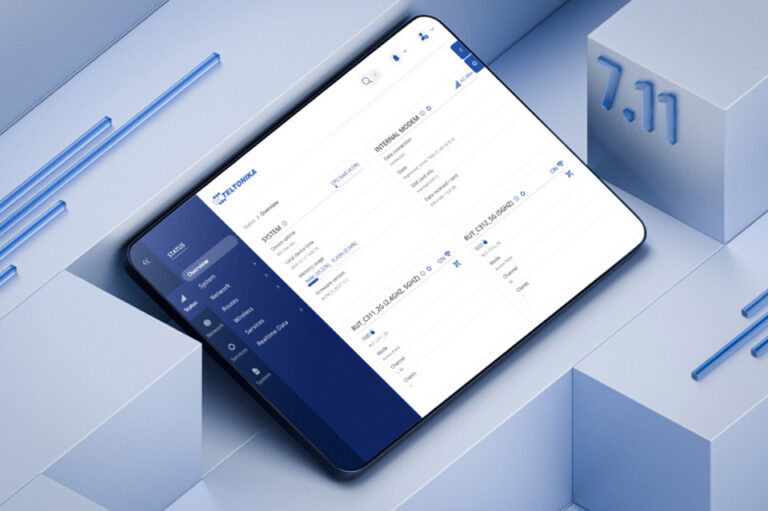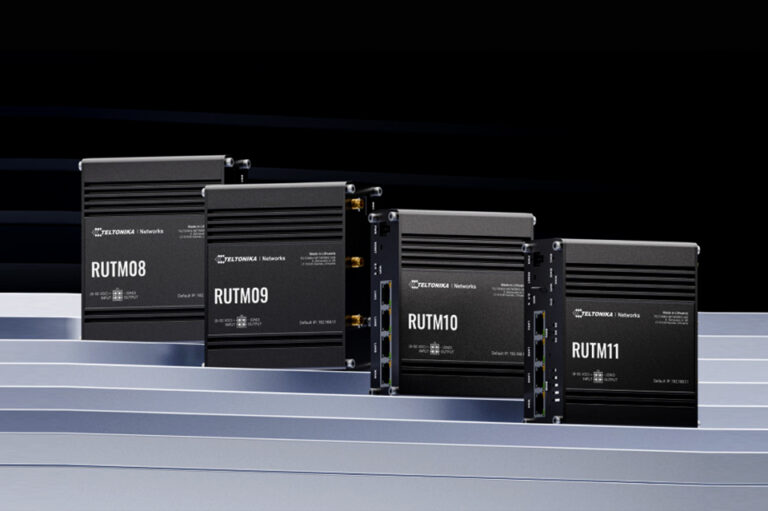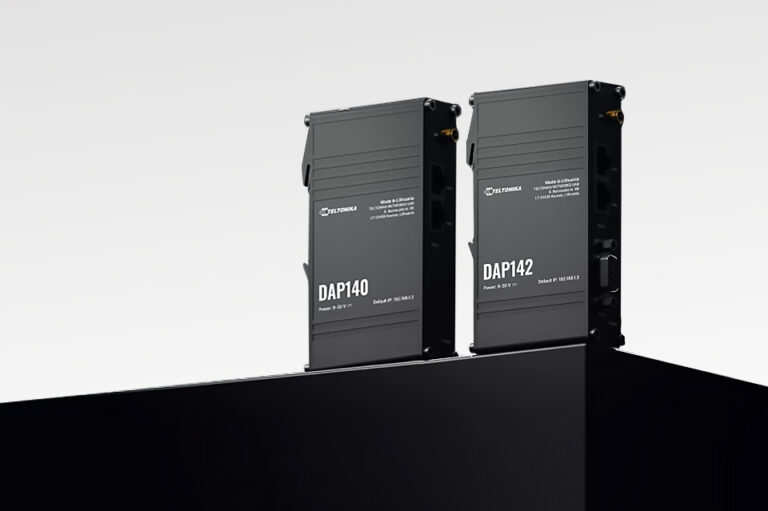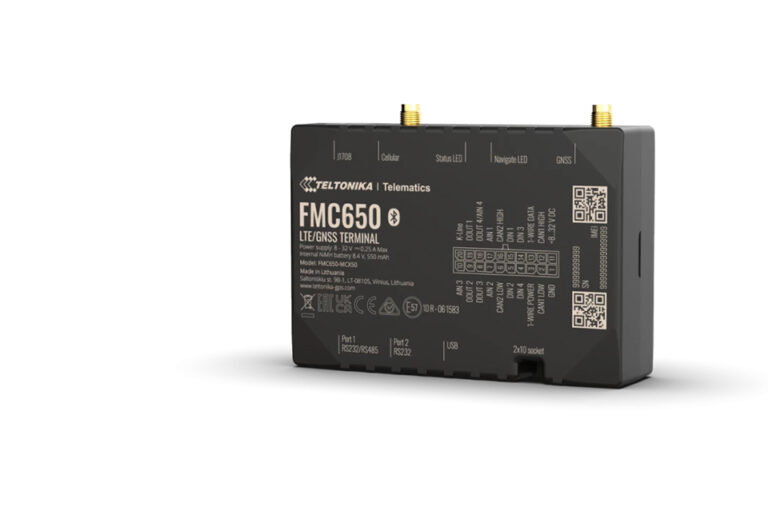Wi-Fi infrastructure is no longer just an issue for large companies. Stable, secure and centrally manageable WLAN is also indispensable in small offices, cafés, stores or educational institutions. The Lithuanian company Teltonika Networks, known for its industrial-grade network technology, offers two access points, the TAP100 and the TAP200, which are tailored to different requirements – from simple networks to powerful multi-user environments.
In this article, we take a detailed look at both devices, compare their strengths and help you choose the right access point for your environment.
TAP100 – Simple, stable, solid
The TAP100 is the more compact of the two access points and is aimed at users who require reliable Wi-Fi in the 2.4 GHz band. It is based on the Wi-Fi 4 standard (802.11b/g/n) and offers basic functions in a robust, discreet housing for ceiling or wall mounting.
Despite its low price, the device offers everything you need for simple scenarios: It supports up to 100 simultaneous clients, has a 10/100 Mbit/s Ethernet interface with PoE-In (in accordance with 802.3af) and comes with two integrated antennas, which provide comprehensive coverage.
A real plus is the RutOS operating system, Teltonika’s powerful OpenWrt derivative, which comes with many professional functions – including VLAN, firewall, captive portal, MAC filtering, time controls and more. In addition, the access point is compatible with Teltonika’s Remote Management System(RMS), which enables centralized management, monitoring and updates via the cloud – securely encrypted and GDPR-compliant.
Typical areas of application are small offices, restaurants, retail outlets, home offices, waiting areas or smaller public facilities.
TAP200 – Dual-band power for demanding networks
While the TAP100 scores points above all for its simplicity, the TAP200 goes a significant step further in terms of performance. It supports Wi-Fi 5 (802.11ac Wave 2) and transmits simultaneously on 2.4 and 5 GHz. This enables significantly higher data rates and a more stable connection with a high user density.
The access point achieves a maximum data rate of up to 867 Mbps on the 5 GHz band, offers MU-MIMO support for simultaneous data transmissions to multiple devices and is therefore ideally suited for environments with many simultaneous users or data-intensive applications such as video conferences or cloud services.
The difference can also be seen in the hardware: Gigabit Ethernet is used here instead of Fast Ethernet as in the TAP100. Power is also supplied via PoE (802.3af). There are four antennas inside – two for each frequency band – which ensure optimum wireless coverage.
Of course, the device also runs RutOS and is fully RMS-compatible. This makes it ideal for professional use in larger networks with several access points and central management.
Typical areas of application are schools, large offices, coworking spaces, public institutions, medical facilities and hotels.
Software & Management: RutOS + RMS
Beide Access Points bieten dieselbe leistungsfähige Software-Basis. RutOS ist modular aufgebaut, lässt sich via Web-GUI oder CLI konfigurieren und bietet professionelle Netzwerkfunktionen wie:
- VLAN-Unterstützung für Netzsegmentierung
- Firewall- und Sicherheitsregeln
- Bandbreitensteuerung
- Captive Portals für Gäste-WLAN
- Zeit- und Zugriffssteuerungen
Mit RMS könnt ihr mehrere Geräte aus der Ferne verwalten – Firmware-Updates, Konfigurationsänderungen und Monitoring inklusive. Gerade in Multi-Standort-Umgebungen ist das ein echter Vorteil.
Unser Fazit: Welcher Access Point passt zu euch?
Wenn ihr einen einfachen, kostengünstigen WLAN-Access Point für kleine Umgebungen sucht, ist der TAP100 die richtige Wahl. Er bietet solide Leistung, einfache Verwaltung und alles, was man für ein stabiles Basis-WLAN benötigt.
Wer jedoch mehr Performance, Dual-Band-WLAN und Gigabit-Ethernet braucht – etwa in Schulen, Büros oder öffentlichen Gebäuden –, fährt mit dem TAP200 deutlich besser. Die moderne Technik macht ihn zukunftssicher und ideal für datenintensive oder stark frequentierte Netze.
Beide Geräte überzeugen durch Qualität, einfache Integration und die gewohnte Teltonika-Zuverlässigkeit – inklusive europäischer Fertigung und langfristigem Support.

